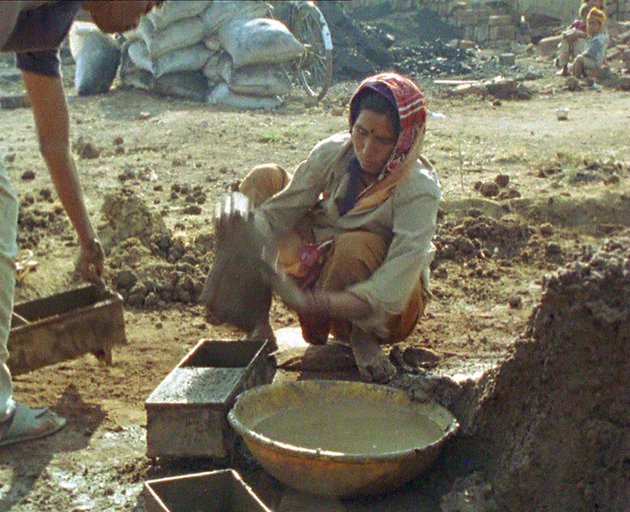
ZUM VERGLEICH / EM COMPARAÇÃO
HARUN FAROCKI
Bricks are the resonating foundations of society. Bricks are simply very long-playing records. Like records, they appear in series, but every brick is slightly different – not just another brick in the wall. Bricks create spaces, organize social relations and store knowledge about social structures. They resonate in a ways that tells us if they are any good. Bricks form the basic sound of our societies, but we haven't yet learned to listen to them. Farocki's film lets our eyes and ears consider different traditions of brick production in comparison – and not in competition, not as a clash of cultures. Farocki shows us various brick production sites in their colours, movements and sounds. Farocki shows sites of brick prodution in their colours, movements and sounds. Brick burning, brick carrying, bricklaying, bricks on bricks, no voice-over. 20 inter-titles in 60 minutes tell us something about the temporality of brickmaking processes. The film shows us that certain modes of production require their own duration and that differences between cultures can be shown in brick time. (Ute Holl)
biografia
Harun Farocki, (born 1944 in Nový Jicin / Neutitschein, died 2014, near Berlin). The oeuvre of the German filmmaker and video artist Harun Farocki comprises more than 100 feature films, essay films, documentaries, and video-installations. He was one of the most important directors of contemporary documentaries and essay films working in Germany. Since 1966 Farocki has also been collaborating with other filmmakers as scriptwriter, actor and producer. Since 1995 he had numerous exhibitions and installations in galleries and museums worldwide. His films and installations are generally socio-political in nature and reveal a keen interest in the role of technology in modern society. His films have dealt with such subjects as Vietnam, capitalism, labour systems, surveillance technology and military reconnaissance. Another recurrent theme in Farocki’s work has been the investigation of images and what lies behind them, of what is really visible to the viewer and likewise what remains invisible - essentially the possibilities of seeing. As Thomas Elsaesser has said: “Farocki’s films are a constant dialogue with images, with image making, and with the institutions that produce and circulate these images.” His films and installations are difficult to categorize and demand close viewing. Nothing is as it seems and the viewers are challenged to keep questioning what they see.